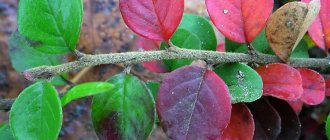The Buttercup family includes such a beautiful, climbing vine as clematis. True, sometimes there are clematis that grow as shrubs or as flowering herbs. In addition to the main name, this perennial is also called vine or clematis. It can be found in the Northern Hemisphere, with a subtropical or temperate climate.
Ranunculaceae united about 300 species of plants. Clematis liana - this plant is the most popular among flower growers and gardeners.
Clematis as a plant for open ground
Clematis belongs to the ranunculaceae family. There are about three hundred varieties of this plant, which has won the tender love of all gardeners. They strive to plant it in the most prominent places in order to create comfort and a bright mood on the site. Often it is clematis that decorates the gate and is the first to “greet” guests. Thanks to the different types of this plant, which can be not only a liana, but also a shrub, you can even create flowering hedges.
Clematis flowers can be small or large, and their shapes and shades are simply amazing in their incredible diversity. Different varieties bloom at different times over a period of 3-4 months. Thanks to this, you can create a bright kaleidoscope of blooming clematis in your garden, which will delight the eye throughout the warm season from spring to early autumn.
The main decorative value of clematis is its abundant flowering.
Most often, clematis is cultivated in the ground, but it will also feel quite comfortable as a houseplant.
It is usually planted in pots, boxes or tubs (at least 60 cm high), placed in a well-lit place. Several holes must be made in the bottom of the container, then drainage and fertile soil are filled in, and after planting, a support for the plant must be installed. To provide the roots with coolness and shading, low-growing “neighbors” are planted in a pot of clematis.
Under comfortable conditions, clematis can bloom for up to five years without replanting.
Group 1
Representatives of group 1 do not need pruning , only if the plant is given the desired shape.
Burning
Clematis stinging or clematis is an unpretentious perennial that is especially popular among gardeners and landscape designers. A strong vine with lush, bright green foliage and numerous small, delicate snow-white flowers. Burning is an excellent option for decorating a site that does not require much maintenance.
Rubens
Clematis rubens is one of the most decorative varieties, with a delicate and persistent aroma during flowering. The peak appearance and opening of pink flowers with a lilac tint occurs in May, with a gradual reduction in the number of flowers throughout the summer.
The shoots of the plant are tender and thin, so preparation for wintering is required by carefully wrapping the branches with covering material. This will protect the buds, ensure the formation of new shoots and high-quality flowering in the spring.
Albina Plena
Clematis "Albina Plena" is a vine up to 4 meters long. Additional supports are required, since the shoots themselves do not cling well to surfaces. It is valued by gardeners for its early and abundant flowering from April.
The first flowers appear on the shoots of last year, at this time new shoots are formed and flowering, although not so abundant and long-lasting, already begins on them. The flowers are white with a slight yellowish tint, usually double, up to 7 cm in diameter. They look very impressive in a duet with bright dark green leaves.
In which regions can you plant in open ground?
Thanks to large-scale breeding work to develop various winter-hardy varieties, clematis has quite easily taken root in the northwestern regions of the country, Siberia and the Far East. But in order to admire the bright colors of summer even in harsh climates, it is important to choose the right varieties whose vines successfully withstand frost.
Clematis flowers are painted in almost all colors of the spectrum, also differing in an infinite number of shades
Table: clematis varieties by planting region
| Name | Color | Where are they planted? |
| Nellie Moser | White and pink with bright lines in the center | Central Russia |
| Gypsy Queen | Violet-magenta | |
| Niobe | Purple red | |
| Hope | Powdery burgundy | Central Russia, Siberia |
| Luther Burban | Violet | Central Russia, Siberia, Ural, North-West, Far East |
| Ballerina | Snow-white | Central Russia, Siberia, Ural |
| Ville de Lyon | Carmine with a fuchsia tint and light stamens | Ural, Far East, Siberia |
| Alexandrite | Bright crimson | |
| Nellie Moser | Light pink | Ural |
| Gypsy Queen | Violet with a dark purple tint | North-West, Far East, Siberia |
| Jacqueman | Burgundy, pink, purple | Northwest |
| Melody | Pearl pink | |
| Elegy | Blue-purple | Southern regions |
| Climber | Pastel lilac | |
| Teal | Soft lilac | |
| Openwork | Pink-violet | |
| Ruitel | Dark purple |
Group 2
Group 2 is represented by low-growing shrub-type vines, reaching an average length of about 2 meters and requiring minor pruning to increase decorative appeal.
Multi Blue
Clematis "Multi Blue" is a popular variety in Russia . A characteristic distinguishing feature is large and bright double flowers in blue and purple shades. Most often used for landscaping balconies and zoning areas in the form of low hedges. This is due to the short length of the vines and the thick roofing ability to cover any supporting structures with a dense layer of foliage. In the photo below, Clematis Multi Blue:
Andromeda
Clematis "Andromeda" is a medium-sized vine that, with proper care, can reach a length of 4 meters. Early flowering with large (up to 16 cm) white flowers with rich pink stripes in the center attracts with its decorative value. To increase the duration of flowering, it needs regular fertilizing with mineral fertilizers.
Most often, Andromeda is used for vertical landscaping of building facades, gazebos and all kinds of arched structures.
May Darling
Clematis May Darling is a vine with giant flowers (up to 23 cm in diameter) of a unique color of delicate double petals, the pride of Polish breeders. Abundant flowering continues throughout the summer.
Expert opinion
Vera Ivanovna Sh
Since childhood, I have been interested in growing indoor flowers, then I decided to devote my life to landscape design and gardening.
Due to the fact that Mai Darling clings to supporting structures with leaves and not shoots, timely staking of the plant is required to prevent the vine from breaking under its own weight. Flowering is equally abundant from May to September inclusive both on the shoots of the previous year and on the young shoots of the current year.
Small light green leaves are in perfect harmony with the bright red-violet flower petals, which have a rich pink border on each petal. By the end of flowering, the border turns from pink to snow-white.
Madame Le Coultre
Madam Le Coultre is another large-flowered variety. It is characterized by its frost resistance, which ensures long flowering from early spring to late autumn with persistent frosts. Another feature is that the vine blooms very profusely and twice per season : the first flowering occurs on 2-3 year old stems, and the second on young shoots of the current year.
Large flowers of the purest snow-white color with golden stamens in the center look like aristocrats against the background of dark emerald leaves and simply attract the eye with their noble aesthetics.
Landing nuances
Most often, clematis is planted in open ground in mid-May. But if the seedling was purchased in the summer, planting should be done in September so that the plant has the opportunity to take root. This should not be done earlier because of the high probability of increased growth (which is not at all necessary during winter) and freezing.
Planting clematis consists of several stages:
- Choosing a location . The plant loves sunny, but slightly shaded areas, which allows it to maintain the brightness and richness of the flowers. In addition, it needs reliable protection from wind and drafts.
- Soil selection . Clematis likes light, nutritious, loose soil that quickly absorbs moisture. It is strictly forbidden to plant clematis in heavy, highly acidic soil, which will inevitably lead to the impossibility of its full development and death. It is important to take into account the level of soil moisture: the plant does not tolerate the abundance of groundwater. To create the most comfortable conditions and protect the roots from rotting, it is better to place the plant on a small artificial hill made by yourself. The presence of clay soil in the area chosen for planting clematis requires removal of moisture from the plant using a ditch dug and filled with sand.
- Pit preparation. Its depth should be no more than 70 cm. First, a layer of crushed stone is placed on the bottom, then a specially prepared soil substrate (a bucket of earth, half a bucket of humus, 100 g of slaked lime).
During autumn planting, the entire volume of soil is filled in immediately.
- Planting a seedling . The roots of the plant are evenly distributed across the width of the hole, after which the substrate is poured on top. If planting occurs in the spring, this is done in such a way that the depression is not completely filled, while the remaining soil is added in small portions until the fall.
When planting clematis near the walls of buildings, it is necessary to retreat 40 cm from them so that the roots cannot be damaged by rain flows from the roofs. If a composition of several bushes is planted, the gaps between them should be at least 25 cm.
Video: planting clematis in open ground
Preparing the soil mixture
Flower growers have long noticed that seeds germinate best in a loose soil mixture that has good water and air permeability. Classic soil is made up of sand, peat and earth, taken in equal proportions.
The container for sowing is selected in advance. It must have small holes at the bottom to drain excess water. It is advisable to have a tray to moisten the soil through it. The lid of the container won’t hurt either, it will create a greenhouse effect.
The treated seeds are sown, placed on a thoroughly spilled and compacted soil mixture. Sprinkle with sand in a layer 0.5 cm thick for small fraction seeds, 1-1.5 cm for medium fraction, 2 cm for large fraction.
Then the seed container is covered with a lid or film or glass. This will keep the soil at constant moisture and prevent it from drying out.
What to grab onto? Choosing a support for clematis Read more
Features of care
The main care for clematis consists of timely, sufficient watering and fertilizing.
Watering
Clematis should be watered at least once a week. During the summer heat, its frequency increases up to 2–3 times. At the same time, 1-2 buckets of water are enough for a baby bush, while for an adult - from 2 to 4. Covering the soil with a layer of mulch (peat, moss, humus) will help reduce the frequency of watering several times and slow down the growth of weeds around clematis. If this is not done, you should regularly (the next day after watering) loosen the soil, simultaneously breaking through the weeds.
Fertilizer
It is also important to know that certain types of fertilizers need to be used at different times:
- nitrogen-containing - during intensive growth;
- potassium - during the formation of buds;
- phosphorus - after the end of flowering.
In summer (after pruning), the plant is fed with a solution of complete mineral fertilizer (20 g per 10 liters of water) and a copper solution. Every year in the spring, the bushes must be watered with lime milk (dolomite flour and chalk). During the flowering period, all feeding is stopped so as not to drown out the activity of the plant itself.
To protect the roots from rot during frequent summer rains, you should cover the bottom of the trunk with wood ash.
Supports
There are several types of supports for vines (arches, pyramids, fan structures, cylinders), each of which is perfect for clematis. Supports allow you to create beautiful compositions and support plant stems. Another requirement is the strength of the construction material, which could withstand the weight of rapidly growing and moisture-laden clematis after rains.
The main thing is that the place where the stem is attached to the support is no thicker than 10–12 mm
Trimming
The correct formation and beauty of the bush depends on this procedure. Pruning is carried out several times a year:
- when planting (to form the crown and root system);
- in spring (to increase the flowering period);
- in summer (regulatory pruning);
- before wintering (taking into account the characteristics that each species requires).
The ability to tiller is a characteristic feature of clematis
Preparing for winter
Before wintering, it is necessary to remove leaves from clematis and trim off damaged and dried out branches. After this, remove it from the support, lay it on the ground and cover it using dry grass and leaves, straw, and sawdust.
Another option is to build a wire frame around a plant laid on the ground, covered with roofing felt, film, roofing felt or a plywood box. At the same time, it is important to ensure that the shelter is not sealed and has air access.
Clematis usually overwinters well. It is much more destructive for it to delay opening in the spring, as a result of which it can dry out.
In spring, it is necessary to free the plant from shelter as soon as the threat of night frosts has passed.
Types of pruning
In order for clematis to delight you with its beauty, proper pruning of the plant is important. There are 3 types: strong, weak and without pruning.
Heavy pruning
This method is necessary for varieties that bloom on new shoots. In autumn, the plant is radically pruned, removing all branches, leaving 2-3 internodes. In the northern regions, the remaining sections are covered with fallen leaves for the winter. The mulch is removed with the onset of spring. This type is used for varieties: Lady Betty Belfort, Pink Fantasy, Rayman.
Weak pruning
Varieties such as Andromeda, Westerplatte, Blue Angel bloom on last year's shoots and shoots of the new season. They are cut twice. The first time is when flowering has passed and the second time, towards the end of autumn, with the onset of frost.
No trimming
Cecil, Columella, Francis Reeves, Constance bloom on last year's branches and do not need autumn pruning. You just need to remove wilted flowers and spoiled branches. They do not need to be covered for the winter. Varieties of this group withstand frost.
Errors in care and their elimination
The beauty and health of any plant depends not only on proper care. It is equally important to select plants intended for the climatic conditions of a particular region.
Recent Entries
Lilac perennials that are beautiful, compact and do not crowd out other plants Why when buying seedlings you should not take the sellers’ word for it and how to determine the age of the plant using 3 signs Tomato seedlings have turned purple or whitish: why the color has changed and how to save the plants
In case of any changes in weather conditions, it is necessary to carry out preventive examinations and measures in order to prevent the occurrence of various plant diseases.
A common mistake made by inexperienced gardeners is improper watering of clematis, which causes its root system to die and the stems to become victims of diseases and pests.
Excessive dampness can cause clematis to be damaged by pathogenic fungi.
The most common diseases that clematis suffers from are:
- Withering. It is caused by a fungus and is accompanied by a loss of elasticity of the shoots, after which they dry out, wither, and without treatment the plant may die. The reasons may be stagnation of moisture and poor drainage of the soil. Treatment consists of removing all damaged shoots and watering the plant with a solution of “Fundazol” (1 g per liter of water), spraying with a 3% solution of copper sulfate (in spring), regularly loosening the soil and removing weeds.
- Gray rot. Plaque in the form of brown spots on leaves and shoots covered with grayish “fluff”. Usually appears during rainy times. To combat it, the affected areas are removed, and the plant is treated with a solution of Azocene or Fundazol.
- Powdery mildew . It is caused by a fungus and looks like a whitish coating on the plant, similar to spilled flour. At the same time, its growth and flowering slows down. For treatment, spraying with a copper-soap solution (25 g per 250 g, respectively, diluted in 10 liters of water) or a solution of soda ash (40 g per 10 liters) is used.
- Rust. Forms brown spots on the leaves and leads to their drying out and deformation of the entire bush. A solution of potassium permanganate (medium strength) will help fight rust.
Group 3
Group 3 are medium-sized (3-4 meters long) shrub vines that require regular pruning to form a decorative covering surface.
Rouge Cardinal
Clematis rouge cardinal is a vine that can braid any surface without additional supports or ties. Most often they are planted in tubs on balconies or in open gazebos. This variety is late flowering , which allows you to enjoy its beauty from mid-summer until late autumn.
Large flowers with velvety petals of purple or dark burgundy color look impressive against the background of dark green, almost matte leaves. To enhance the contrast, they are planted near the snow-white facades of buildings. The photo below shows Clematis Rouge Cardinal:
Taiga
Clematis Taiga is a unique variety of vine that, thanks to its tendrils, can be attached to vertical, even completely smooth surfaces without any supporting structures, and also looks great as a natural carpet on a horizontal surface or the ground.
Flowers of unusual color attract special attention - the outer petals are a single-colored deep purple hue, and the central petals are two-colored, combining bright lemon and purple colors. This contrasting combination is eye-catching. You can see what the Clematis Taiga flower looks like in the photo below:
Purpurea plena elegans
Clematis purpurea plena elegans is a clematis variety for lovers of the classics. Upon awakening, the fast-growing vine , accompanied by the formation of small (no more than 8 cm in diameter) flowers in huge quantities.
There can be about 100-150 flowers on one shoot. All of them have a terry, very voluminous structure with petals slightly twisted towards the outer contour and completely absent stamens in the center. Purpurea plena elegans is a long-flowering plant.
Princess Diana
Clematis "Princess Diana" is a decorative and attractive variety. Dark emerald foliage sets off small (up to 7 cm) flowers of a unique color. The petals are bright crimson in the center and gradually fade into soft pink shades along the outer edges. The play of shades gives greater volume to each bell-shaped flower, each of which looks playfully upward. Photo Princess Diana:
Ville de Lyon
Ville de Lyon is the most popular variety of clematis with small, oval, heart-shaped leaves and large (up to 15 cm) bright pink flowers. On old shoots small flowers of purple shades are formed, and on young shoots larger fuchsia colors - this creates the illusion of a composition of several plants.
When blooming in direct sunlight, the flowers gradually fade and become white, which ensures that you can enjoy the changing decorativeness of the plant throughout the summer. The photo below shows Clematis Ville de Lyon:
Princess Kate
Clematis Princess Kate is a variety of late-blooming vine. It blooms from late June to early October. Attracts with the unusual color and shape of its small flowers. At the beginning of flowering, each flower has an urn-like shape, which gradually transforms into a bell.
The petals are purple on the outside and snow-white on the inside with a red-violet tint at the base. This palette of matching shades gives the flowers volume and contrasting appeal. Princess Kate flowers are formed exclusively on young shoots in large quantities and have a long flowering period. In autumn, the infructescences that form in place of flowers look no less decorative.
Pest and disease control
No less dangerous for clematis are pest invasions, such as:
- Aphid. It settles on the underside of leaves, feeds on their juice and leads to drying and curling. To eliminate it, spraying with “Fitoferm” (2 mg per 1 liter of water) helps.
- Spider mite. Causes white spots to form on the bottom of leaves and cover the plant with cobwebs, causing it to appear weakened. Insectoacaricides and acaricides (toxic drugs diluted at 1 mg per liter of water) are considered effective means of combating it.
- Slugs. They eat leaves and stems at night. Against them, ammonia is used (2 tablespoons per liter of water), which is used to treat the plant.
Slugs can be collected manually after dark
Reproduction
You can buy the plant you like, but those that you manage to grow yourself are of particular value to gardeners. Let's look at the most common methods of propagating clematis.
Cuttings
Propagation by cuttings is a fairly common method, but also difficult.
Cuttings of young shoots give a survival rate of around 75%. Young green cuttings during the budding period , but before the flowering process begins, for propagation using this method Such cuttings have a high chance of taking root and forming a strong and healthy plant.
For cuttings, shoots are cut above 1 or 2 full leaves, making an oblique cut 5 cm below the node. A cut cutting to 1/3 of its length is immersed for 10 hours in a solution of a growth regulator (heteroauxin, root, sodium humate can be used). Then they are washed under running water and rooted in a pot.
By layering
The simplest and most effective method, guaranteeing a 90% probability that a new strong plant will grow from the cuttings. To do this, in early spring, when the regrown shoots of clematis begin to be tied to a support, it is necessary to select a healthy and promising shoot and place it in a furrow prepared for cultivation to a depth of 7 cm so that the end of this shoot with developed healthy buds freely extends 15-20 cm above earth.
The groove with the shoot is regularly moistened until new shoots appear, after which the rooted shoots are covered with earth.
For the winter, the cuttings are carefully covered, and in the spring they are cut between the nodes and rooted as separate plants in the places where they are constantly grown.
Growing from seeds
Growing from seeds at home is a complex and lengthy process, which allows you to develop completely new varieties with even more attractive decorative properties. The timing of sowing and the appearance of the first shoots depends directly on the plant variety and the size of the seed. Based on size, seeds are divided into 3 groups : small, medium and large. Each group has its own terms of germination and germination.
Preparing seeds for sowing
Due to their long germination period (for some varieties up to 500 days), seeds are sown without preliminary preparation in the fall, immediately after collection. But some gardeners prefer to pre-prepare the seeds and plant them in the spring, reducing the germination period.
To do this, the seeds are first placed for a month in a dark, cool place (or a refrigerator door), then they are stored at room temperature for a day and placed in an airtight container with a damp cloth for 3 days to activate the awakening of the seed.
After such manipulations, the seeds are planted in pots and sprouts will not take long to appear.
Seedling care
The emerging clematis sprouts do not require special care. The main thing is not to allow the earthen coma to dry out , to ensure the absence of direct sunlight and drafts. Once every two weeks it is recommended to feed the seedlings with ready-made universal growth activators.











